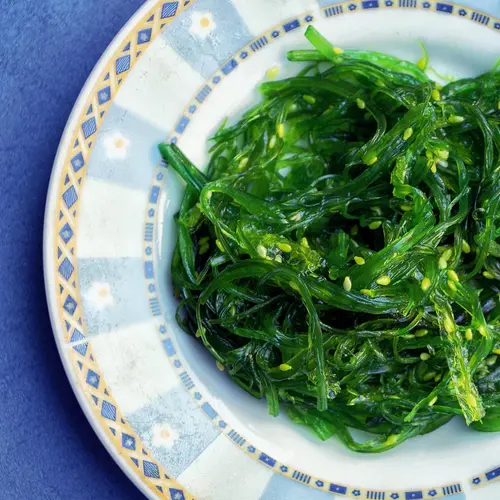What Are Water Chestnuts?
The water chestnut, also known as the Chinese water chestnut, is not really a nut. It’s an aquatic vegetable, often grown underwater in marshy and muddy areas.
The grass-like plant is native to Asian countries like China, India, the Philippines, and Japan. The water chestnut also grows in Australia, tropical Africa, and some Pacific and Indian Ocean islands.
Small, round “corms” that are cut from the plant can be eaten cooked or raw in a variety of dishes.
Fresh vs. canned water chestnuts
Fresh water chestnuts have a sweeter flavor than the canned variety. If eaten raw, the water chestnut plant may transmit an infectious parasite called fasciolopsiasis. To avoid an infection, thoroughly wash and peel fresh water chestnuts before you eat them.
You can buy canned water chestnuts at most grocery stores. When sold this way, the corms are peeled and may be left whole or sliced. Canned water chestnuts pose little food safety risk; however, it is safer to rinse and drain them before use.
Water Chestnut Benefits
Water chestnuts' health benefits include:
Reduced stroke risk and improved blood pressure. Potassium, which is present in water chestnuts, may reduce your risk of stroke and high blood pressure, both of which are linked to heart disease. Studies suggest that people whose diets contain plenty of potassium have a significantly lower risk for stroke and high blood pressure.
Antioxidants. Antioxidants such as those found in water chestnut peels can help repair damaged cells and reduce inflammation, reducing your risk of some chronic diseases.
Digestive health. Water chestnuts are high in fiber, which helps your body digest food more efficiently. Fiber aids digestion by helping food move through your large intestine. Fiber also absorbs water, which softens stools and allows them to pass more smoothly.
Weight loss. People following a weight loss plan may benefit from adding water chestnuts to their diets. High-fiber foods, such as water chestnuts, help you feel full without adding lots of calories.
A low FODMAP food. FODMAPs are fermentable oligosaccharides, disaccharides, monosaccharides, and polyols, which are types of sugars that the small intestine absorbs poorly. If high FODMAP foods cause you to have digestive problems such as irritable bowel syndrome (IBS), water chestnuts are a low FODMAP option, which won't stress your gut.
Water Chestnut Nutrition
Water chestnuts are high in fiber, low in calories, and contain no fat. They also contain several vitamins and healthy antioxidants.
Water chestnuts are an excellent source of:
- Vitamin B6
- Riboflavin
- Potassium
- Manganese
- Copper
Raw water chestnut nutrients per serving
A 2/3 cup serving (100 grams) of raw, sliced water chestnuts contains:
- Calories: 97
- Protein: 1 gram
- Fat: 0 grams
- Carbohydrates: 24 grams
- Fiber: 3 grams
- Sugar: 5 grams
- Potassium: 584 mg
Canned water chestnut nutrients per serving
A 2/3 cup serving (100 grams) of canned, sliced water chestnuts, contains:
- Calories: 29
- Protein: 0.7 grams
- Fat: 0 grams
- Carbohydrates: 7 grams
- Fiber: 2 grams
- Sugar: 3 grams
- Potassium: 200 mg
How to Prepare Water Chestnuts
You can eat water chestnuts raw, boiled, grilled, pickled, or from a can.
The corms are unique because they remain crisp even after being cooked or canned, due to their ferulic acid content.
Water chestnuts are popular in Chinese cooking. In the U.S., one of the most common dishes prepared with water chestnuts is American-Chinese chop suey.
Water chestnut recipes
Here are some ways you can use water chestnuts in recipes:
- Stir-fry: Steam water chestnuts and add them to a stir-fry with spicy meats or savory greens
- Soup: Make a water chestnut and pork ribs soup
- Lettuce wraps or egg rolls: Use water chestnuts as a filling with other vegetables
- Side dish: Sauté water chestnuts with green beans and ginger
- Appetizer: Wrap water chestnuts in bacon and bake until crispy
- Salad topping: Add water chestnuts to chicken or tuna salads for added crunchiness
- Snack: Enjoy water chestnuts plain, pickled, or candied
- Dessert: Make a Thai “Red Rubies” dessert, featuring water chestnuts dyed red and coconut cream
- Baked goods: Dry water chestnuts and grind them into a thickening agent or flour
Water chestnut substitute
If water chestnuts aren't available, or you wish to use an alternative ingredient, jicama is a good option. It has a similar crunch and texture. Jicama is also low in calories and high in fiber, like water chestnuts.

